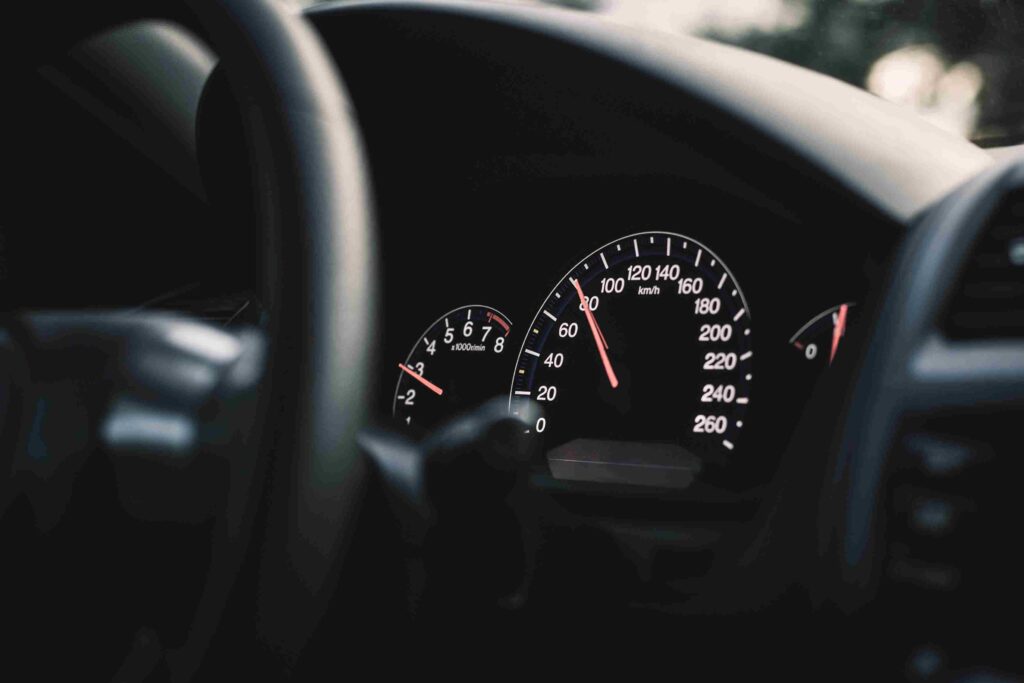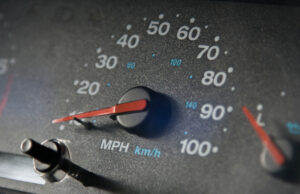How Does Installing Larger Tires Affect My Speedometer
How Does Installing Larger Tires Affect My Speedometer? Customizing vehicles with larger tires is a common practice among car enthusiasts and off-road adventurers. Whether you’re looking to enhance your vehicle’s appearance, improve its off-road capabilities, or simply enjoy a smoother ride, upgrading to larger tires can offer a range of benefits. However, one important factor that is often overlooked is the effect that this modification can have on the accuracy of your vehicle’s speedometer.
Understanding Tire Size and Speedometer Calibration
Diameter and Revolutions Per Mile
To understand how tire size affects speedometer accuracy, it’s essential to grasp the relationship between tire diameter and revolutions per mile. The diameter of a tire directly impacts the distance it covers with each revolution. Larger tires have a greater circumference, meaning they cover more ground per revolution compared to smaller tires. Consequently, this change in tire size can disrupt the accuracy of the speedometer, which is calibrated based on the factory tire size.
Gear Ratios and Transmission
In addition to tire diameter, the vehicle’s gear ratios and transmission also play a role in determining speedometer accuracy. These components are designed to work in harmony with the factory tire size to provide accurate speed readings. However, when larger tires are installed, the vehicle’s gear ratios may no longer be optimized for the new tire size, further exacerbating the discrepancy in speedometer readings.
Effects of Inaccurate Speedometer Readings
Legal Implications
Inaccurate speedometer readings can have legal ramifications for drivers. If the speedometer consistently underestimates the vehicle’s speed due to larger tires, drivers may inadvertently exceed the posted speed limit, leading to speeding violations and potential fines. Moreover, inaccurate speedometer readings can complicate legal proceedings in the event of a traffic accident or citation.
Vehicle Performance
Beyond legal concerns, inaccurate speedometer readings can also impact the overall performance of the vehicle. Modern vehicles utilize electronic systems that rely on accurate speed data for various functions, including fuel efficiency calculations, transmission shifting, and traction control. When the speedometer provides incorrect readings, these systems may not perform optimally, leading to reduced fuel efficiency, sluggish acceleration, and diminished overall performance.
Safety Concerns
Perhaps most importantly, inaccurate speedometer readings can compromise safety on the road. Drivers rely on their speedometers to gauge their speed and adjust their driving behavior accordingly. When the speedometer inaccurately reflects the vehicle’s speed, drivers may inadvertently travel at unsafe speeds, increasing the risk of accidents and collisions. Moreover, inaccurate speedometer readings can impair a driver’s ability to maintain a consistent speed, navigate traffic, and react to changing road conditions.
Addressing Speedometer Inaccuracy
Speedometer Recalibration Devices
Fortunately, there are several methods available to address speedometer inaccuracy resulting from larger tires. One common solution is the use of speedometer recalibration devices. These aftermarket devices are designed to adjust the speedometer’s readings to compensate for the change in tire size. By connecting to the vehicle’s onboard diagnostics port or wiring harness, these devices can reprogram the speedometer to provide accurate readings based on the new tire size.
Programming Adjustments
In some cases, speedometer recalibration can be achieved through programming adjustments using specialized software. This method is particularly common in modern vehicles equipped with electronic control modules or programmable instrument clusters. By accessing the vehicle’s computer system, either through a diagnostic tool or proprietary software, technicians can adjust the speedometer calibration settings to match the new tire size accurately.
Consultation with Professionals
For drivers unfamiliar with speedometer recalibration procedures or those facing complex calibration issues, seeking assistance from automotive professionals is advisable. Experienced mechanics, tire specialists, and automotive technicians have the expertise and specialized equipment needed to accurately recalibrate the speedometer and address any underlying issues. Whether it’s adjusting gear ratios, reprogramming electronic modules, or installing aftermarket calibration devices, these professionals can ensure that the speedometer provides accurate readings regardless of tire size.
Understanding how tire size affects speedometer readings and taking proactive measures to recalibrate the speedometer can help maintain safe and legal driving practices. Whether you’re upgrading your tires for performance, aesthetics, or off-road capabilities, being aware of the impact on your speedometer is crucial for a smooth and enjoyable driving experience.
Check Your Vehicle Specifically
Be sure to check your exact model of vehicle before upgrading your tire size. It is crucial to be sure your tires will fit without damaging your vehicle.
- Ram
- Ford F150
- Ford Bronco
- Ford Expedition
- Ford Maverick
- Ford Ranger
- Jeep Gladiator
- Jeep Wrangler
- Chevrolet Colorado
- Chevrolet Silverado
- Chevrolet Suburban
- Honda Ridgeline
- Toyota 4Runner
- Toyota Tundra
- Toyota Tacoma
How To Recalibrate Your Speedometer
If you’ve upgraded your tires to a larger size, you may need to recalibrate your speedometer to ensure it is displaying accurate readings. having an accurate speedometer is crucial for safe and legal driving. Fortunately, recalibrating your speedometer is a relatively simple task that you can do yourself.
Step 1: Gather Your Tools
Before you begin, make sure you have the necessary tools and equipment:
- Owner’s manual
- GPS device or smartphone with GPS capability
- Measuring tape or ruler
- Pen and paper
Step 2: Determine the Current Inaccuracy
Start by determining how inaccurate your speedometer is. Drive your car on a road with marked distances. Note the difference between your speedometer reading and the actual distance covered. For example, if your speedometer reads 60 mph but you’re only covering 55 mph according to the markers, your speedometer is off by 5 mph.
Step 3: Consult Your Owner’s Manual
Refer to your car’s owner’s manual to find information on your vehicle’s stock tire size and axle ratio. These specifications are crucial for recalibrating your speedometer accurately.
Step 4: Calculate the Correction
Factor Using the information from your owner’s manual and the measurements you took, calculate the correction factor needed to adjust your speedometer. You can use online calculators or formulas to help with this calculation. The correction factor will depend on factors such as tire size, axle ratio, and the degree of inaccuracy in your speedometer reading.
Step 5: Adjust the Speedometer
Depending on your vehicle model, there are different methods for adjusting the speedometer:
- Electronic Speedometer. Some newer vehicles have electronic speedometers that can be recalibrated using diagnostic tools or software. Consult your owner’s manual or a professional mechanic for guidance on how to access and adjust the settings.
- Mechanical Speedometer. If your car has a mechanical speedometer, you may need to physically adjust the speedometer cable or gear to recalibrate it. This process typically involves removing the instrument cluster and making adjustments as needed.
Step 6: Test Your Speedometer
After making the necessary adjustments, take your car for a test drive to ensure that the speedometer is now displaying accurate readings. Use a GPS device or smartphone app to compare your speedometer reading with the GPS speed.
Step 7: Fine-Tuning
If your speedometer is still slightly off, you may need to fine-tune the adjustment. Repeat the process of measuring the accuracy and making adjustments until you achieve the desired level of accuracy.
Recalibrating your speedometer is an essential task for maintaining safe and legal driving. By following the steps outlined in this guide, you can ensure that your speedometer accurately reflects your vehicle’s speed, regardless of any modifications or changes you’ve made.








